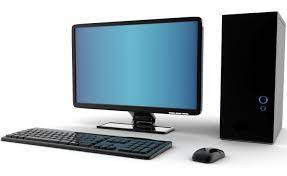Title: A Comprehensive Guide to Building Your Own Custom PC
Introduction
In today's digital age, building your own custom PC has
become increasingly popular among enthusiasts and professionals alike. Not only
does it offer a greater degree of customization and performance optimization,
but it can also be a rewarding and educational experience. This comprehensive
guide aims to walk you through the step-by-step process of building your own
custom PC, from selecting components to assembling them into a fully functional
system.
1. Planning Your Build
Before you dive into the world of PC building, it's
essential to have a clear plan in mind. Start by defining your budget, intended
use case, and performance requirements. Consider factors such as gaming,
content creation, or everyday productivity tasks, as they will influence your
component choices. Research the latest hardware trends, compatibility issues,
and user reviews to make informed decisions.
2. Selecting Components
The heart of any PC build lies in its components. Here's a
breakdown of the key hardware you'll need:
Processor (CPU): Choose a CPU based on your performance
needs and budget. Consider factors such as core count, clock speed, and thermal
design power (TDP). Intel and AMD offer a range of options catering to
different user requirements.
Motherboard: The motherboard serves as the foundation for
your PC build, connecting all components together. Select a motherboard that is
compatible with your chosen CPU socket type and offers the necessary features
such as RAM slots, expansion slots, and connectivity options.
Memory (RAM): RAM plays a crucial role in system
performance and multitasking capabilities. Choose DDR4 RAM modules with
sufficient capacity and speed to meet your computing needs.
Graphics Card (GPU): For gaming and graphics-intensive
tasks, invest in a dedicated graphics card. Consider factors such as GPU
architecture, VRAM capacity, and cooling solutions based on your performance
requirements.
Storage: Select a combination of storage devices,
including solid-state drives (SSDs) for fast boot times and application
loading, and hard disk drives (HDDs) for mass storage needs. Consider factors
such as capacity, speed, and form factor when choosing storage options.
Power Supply Unit (PSU): Choose a reliable PSU with
sufficient wattage to power your components safely. Consider factors such as
efficiency rating, modular cables, and future upgradeability when selecting a
PSU.
Case: The case houses all your components and determines
the aesthetics and airflow of your build. Choose a case that accommodates your
chosen components, offers sufficient cooling options, and matches your personal
preferences.
Additional Components: Don't forget about peripherals such
as a monitor, keyboard, mouse, and operating system (OS) software to complete
your PC build.
3. Preparing Your Workspace
Before you begin assembling your PC, set up a clean and
well-lit workspace with ample room to work comfortably. Gather all necessary
tools and equipment, including screwdrivers, cable ties, thermal paste, and an
anti-static wrist strap to prevent damage to sensitive components.
4. Assembly Process
Now that you have all your components ready, it's time to
start assembling your custom PC. Follow these step-by-step instructions:
Step 1: Install the CPU onto the motherboard socket
according to the manufacturer's instructions. Apply thermal paste if necessary,
and secure the CPU cooler in place.
Step 2: Install the RAM modules into the appropriate DIMM
slots on the motherboard. Ensure that the RAM is properly seated and locked
into place.
Step 3: Install the motherboard into the case using
standoffs to prevent short circuits. Connect the necessary power cables, front
panel connectors, and expansion cards to the motherboard.
Step 4: Install the storage devices (SSD/HDD) into the
designated drive bays in the case. Connect the SATA data and power cables to
the motherboard and storage devices.
Step 5: Install the graphics card into the PCIe slot on
the motherboard. Secure the GPU in place using screws or retention clips, and
connect the necessary power cables from the PSU.
Step 6: Route and manage the cables neatly to ensure
optimal airflow and aesthetics. Use cable ties and cable management features in
the case to keep cables organized and out of the way.
Step 7: Install the power supply unit into the case and
connect the necessary power cables to the motherboard, CPU, GPU, storage
devices, and other components.
Step 8: Double-check all connections and components to
ensure everything is properly installed and secured. Close the case panels and
power on your custom PC for the first time.
5. Testing and Troubleshooting
Once you've assembled your custom PC, it's essential to
perform thorough testing to ensure everything is functioning correctly. Power
on the system and enter the BIOS/UEFI setup to verify that all components are
detected and configured properly. Run stress tests, benchmarking tools, and
hardware monitoring software to check for stability, temperatures, and
performance metrics.
If you encounter any issues or errors during testing, refer
to the manufacturer's documentation, online resources, and troubleshooting
guides for assistance. Common troubleshooting steps include checking
connections, updating drivers and firmware, and resetting BIOS/UEFI settings.
6. Finalizing Your Build
Congratulations! You've successfully built your own custom
PC. Take some time to admire your handiwork and personalize your setup with
custom lighting, decals, and accessories. Install your preferred operating
system (Windows, macOS, Linux) and drivers to start using your new PC for
gaming, productivity, content creation, and more.








This knowledge help me to built my PC thankyou☺️☺️
ReplyDelete